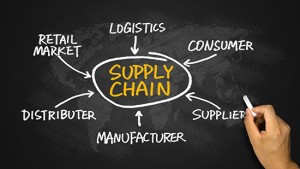Automotive supply chain disruptions ripple out across Europe from Russia-Ukraine war
We naturally focus on metals and energy issues when reviewing the Russian invasion of Ukraine.
However, metals and energy are not the only commodities or products Russia and Ukraine export to the world.
While neither country dominates any sector, both Russia and Ukraine play a significant enough role in certain sectors for supply chain disruption to have a meaningful impact.
The weekly MetalMiner newsletter will feature weekly coverage of the war and its ongoing impacts on metals markets.
Automotive supply chain disruption
The countries of eastern Europe are the most integrated with their former “partners” in the old Soviet Union. The Baltic states, Poland, Bulgaria and Romania still enjoy a fair amount of regional supply, particularly in the automotive sector.
As T2/T3 suppliers to German, French and British automakers, disruption here will have a knock-on effect to the smooth running of major automakers.
A lack of wiring harnesses from Ukraine has already caused the closure of at least some car plants in continental Europe. According to the Financial Times, Porsche and BMW became the latest carmakers to shut European plants. The reason? A lack of parts from Ukraine.
It will take time to find alternative sources of supply (or, where dual sourcing has been in operation, for second sources to ramp up supply). One parts maker in Ukraine, Aptiv, which has two Ukrainian facilities, has already moved some out of the country into other sites to try to maintain production, the Financial Times reports.
However, that took foresight. The vast majority of parts makers do not have the ability to move production.
Our Automotive MMI report includes additional coverage of the automotive market.
Russian disruption and the palladium problem
The same has happened in the opposite direction.
For example, Renault closed its Moscow plant because of a lack of parts. Many manufacturers have voluntarily closed plants in Russia, including Toyota, Mercedes-Benz, Hyundai, Ford and BMW. Cross-border trade in car parts is rapidly drying up.
At some stage, automakers in western Europe could also be hit by a lack of palladium supply. Russia produces some 40% of global supply. South Africa is the next largest producer. However, South Africa does not have the ability to ramp up to cover the shortfall.
Nor are stocks significant enough to carry industrial users through a prolonged outage. A shortage of semiconductors hit global automotive production last year. However, automakers increased output as they found workarounds. Some customers took delivery of new vehicles found with compromised capabilities compared to the ordered specification.
How the current disruption will pan out remains to be seen. However, it’s likely to get much worse before it gets better.



Leave a Reply